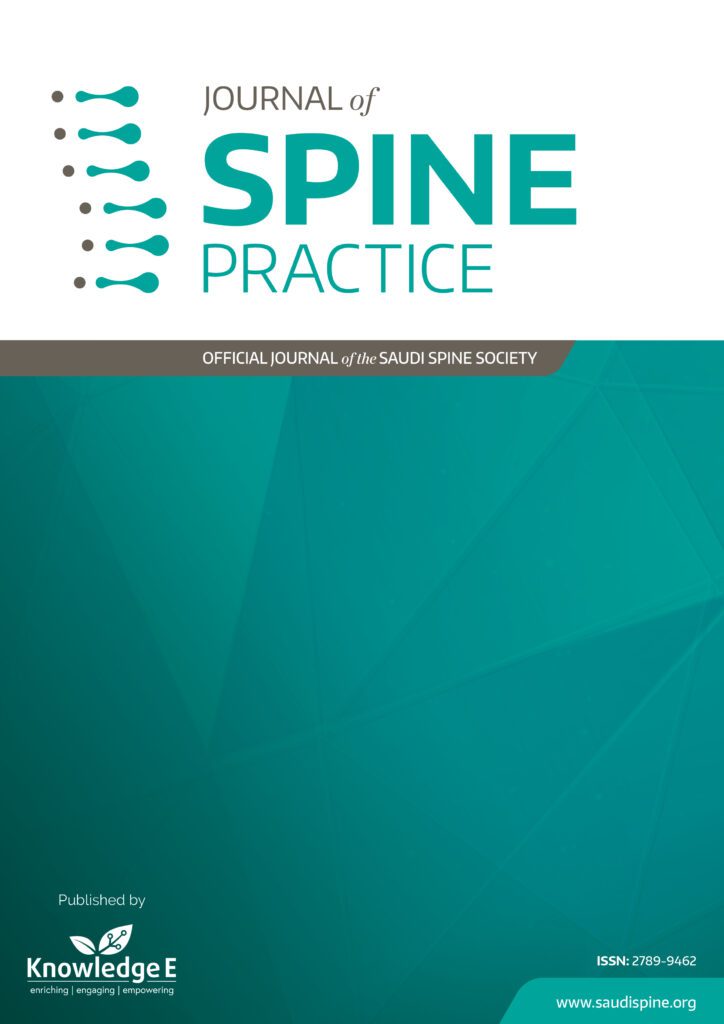
Journal of Spine Practice
ISSN: 2789-9462
Leading research in all spine subspecialties focusing on orthopaedic spine, neurosurgery, radiology, and pain management.
Occupational Therapy Treatment Time During Spinal Cord Injury Rehabilitation: A Retrospective Study in Riyadh
Published date: Nov 07 2021
Journal Title: Journal of Spine Practice
Issue title: Journal of Spine Practice (JSP): Volume 1, Issue 1
Pages: 26
Authors:
Abstract:
Introduction: Occupational therapy (OT) is a part of rehabilitation that facilitates and enables individuals with traumatic spinal cord injuries (TSCI) to engage in daily occupations independently. Little is known about the type of OT treatment plan and the amount of time spent selecting the treatment intervention during TSCI rehabilitation. This study aimed to describe the overall time spent by patients with TSCI throughout their inpatient rehabilitation stay.
Methodology: A chart review was conducted of patients attending inpatient rehabilitation for TSCI at King Abdulaziz Medical City between 2016 and 2020. For each patient, an electronic medical file, the documented rehabilitation session, including the time spent and type of therapeutic activity, were extracted. Demographic, clinical data related to the type of injury and the level of spinal cord injury (SCI) involved were also collected. We estimated the time that each patient had among all sessions and examined it with clinical factors.
Result: A total of 50 eligible patients were included in this analysis. The mean age of the study population was 28 (interquartile range [IQR], 22–41) years, and the majority were male patients (82%). The most common reason for the SCI was a motor vehicle accident (94%), in which 56% required ICU admission. Among the study population, 58% had paraplegia and 42% had quadriplegia. The most common specific therapeutic activity was education (100%), equipment prescription (96%), transfer training 86%, and toilet training (70%). The mean total time spent over the patients’ entire stay was 1785 min (IQR 660–3300 min), with approximately 43.7 hr (SD 52 hr) of occupational rehabilitation. After categorizing the spinal cord injury, a mean total of 33 (IQR, 20–110) hr of session was received for patients who had an SCI level between C1 and C4 over the course of rehabilitation, and this was 25 (IQR, 15–32) hr of session for patients with an SCI level between C5 and C8, 36 (IQR, 5–8) hr of session for patients with an SCI level of <T1–T6, and 29 (IQR, 5–53) hr of session for patients with an SCI level of <T6.
Conclusion: Almost all patients with TSCI participated in strengthening/Range of Motion (ROM) exercises and Activities of Daily Living (ADLs) training during OT treatment; these two were the most time-consuming interventions. When examining therapy, we found that lower body dressing training was the most time-consuming ADL. Significant variation were seen in time spent among TSCI for all OT interventions when examining both the total time spent and a calculated number of minutes per session. Some of this variation could be explained by patient and injury characteristics.
References: